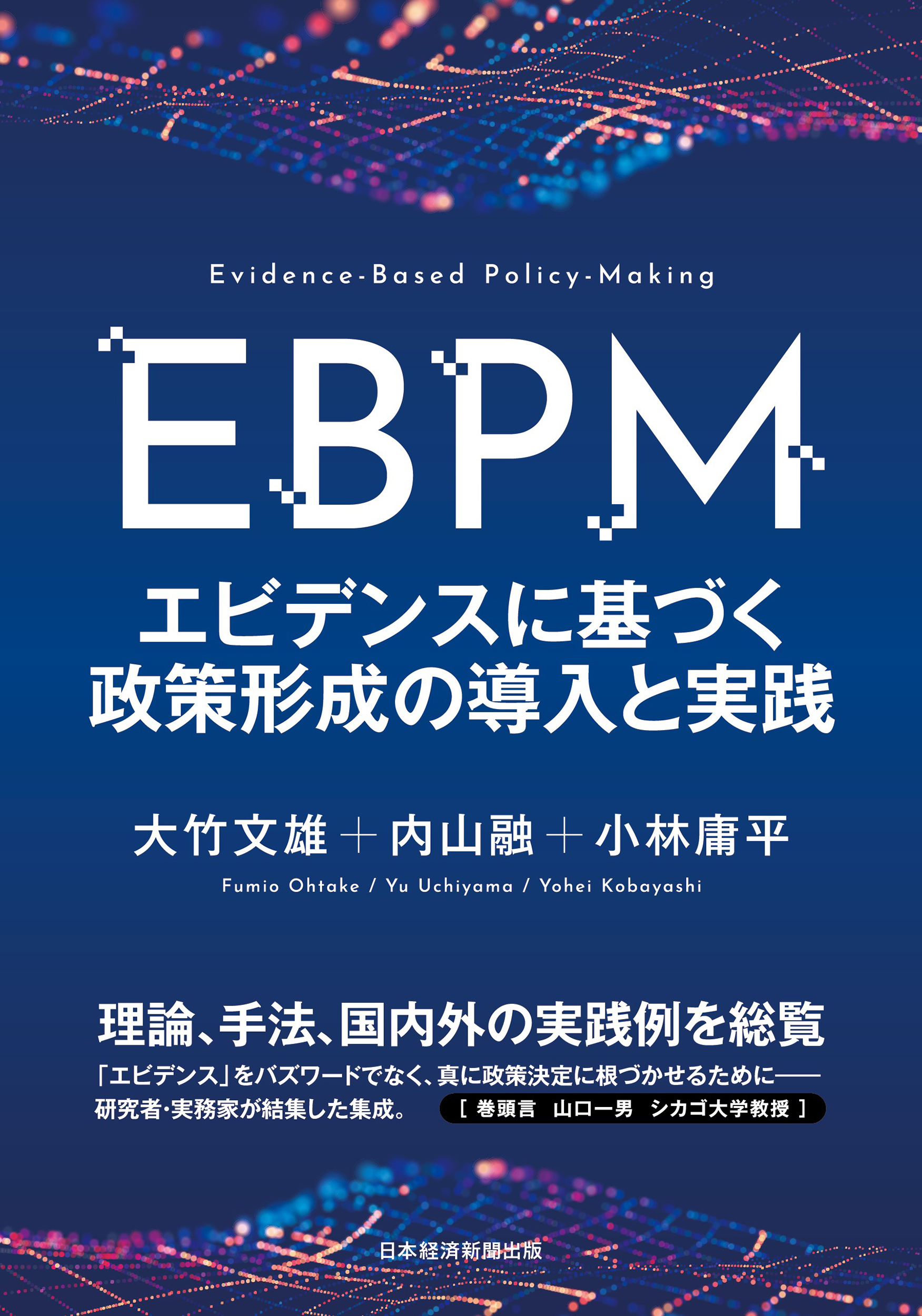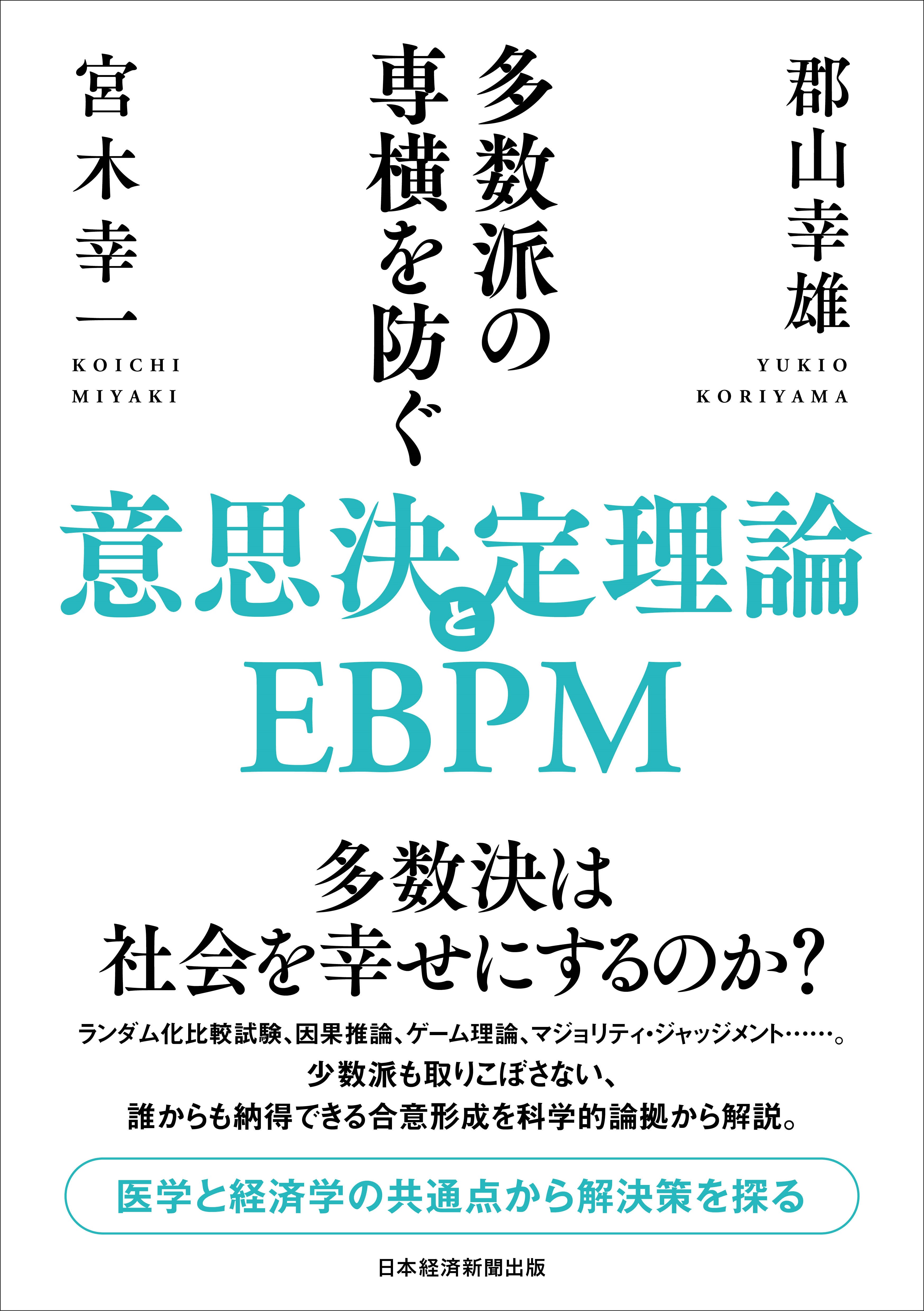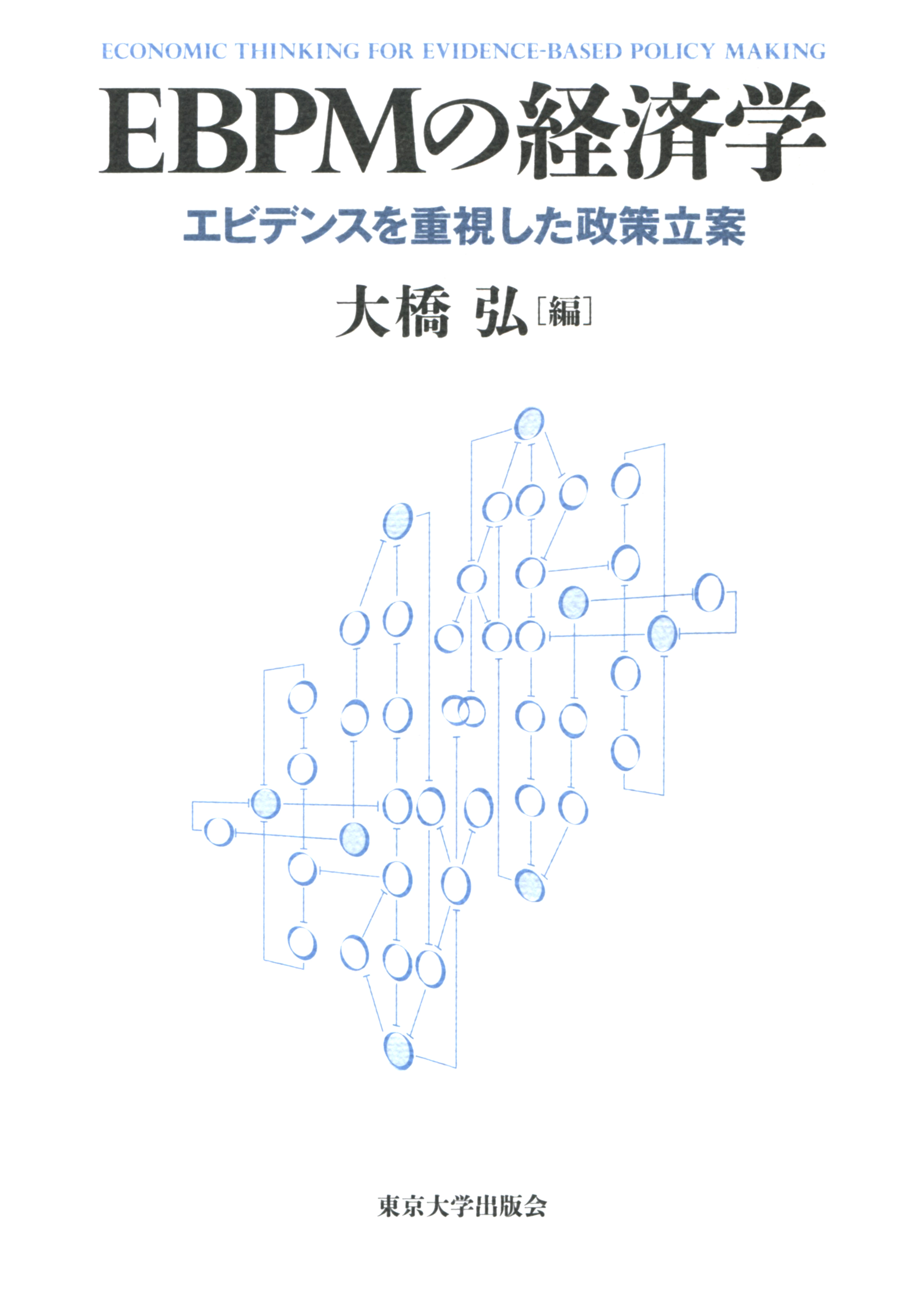
Title
EBPM (Introduction and Practice of Evidence-Based Policy-Making)
Size
480 pages, A5 format
Language
Japanese
Released
December 28, 2022
ISBN
9784296115266
Published by
Nikkei BP
Book Info
See Book Availability at Library
Japanese Page
The word evidence has become ubiquitous in the field of policy-making, in the media, and in parliamentary debates in recent years. However, what exactly is evidence-based policy-making (hereinafter referred to as EBPM) in the first place? Why is EBPM necessary?
Traditional policy-making does not always emphasize analyses based on economics and other social sciences. In some ways, policy-making relies on the “intuition” of policymakers and responding to the needs of stakeholders.
However, in the face of unprecedented challenges such as a rapidly declining birthrate, an aging population, and fiscal pressures, there is a growing need to ensure the effective utilization of policy resources. Therefore, there needs to be a shift toward realizing more cost-effective policies, such as comparing the effects of policy options based on scientific methods that include empirical experiments and using public statistics held by the government to predict policy impacts. In other words, it is essential to generate high-quality evidence by assessing policies using appropriate methods and then formulating policies based on such evidence.
Given these circumstances, this book was planned and published as a standard text to help a wide range of people understand EBPM. This book explains the basic concepts and methods of EBPM and provides concrete explanations using illustrations from the United States, the United Kingdom, and other foreign countries, as well as practical examples from Japan. The goal is to provide clues as to what evidence is, the procedures that EBPM requires, and the kinds of cases that can serve as models. A brief introduction follows.
Part I covers the basics of EBPM. Chapter 1, “What is EBPM,” explains the fundamental concepts and specific procedures involved in EBPM, such as evidence and causal inference, and expounds on the position of EBPM in the overall policy process.
Part II deals with case studies of EBPM in countries outside Japan. For instance, Chapter 6, “EBPM in the United Kingdom,” explains the actual practices of EBPM in the UK government in terms of ex-ante and ex-post evaluations and demonstrates how professionals such as government economists and independent institutions such as the Office for Budget Responsibility and the What Works Centre (WWC) play a major role in EBPM.
Part III deals with cases of EBPM in Japan in policy areas such as education, environment and energy, and economy and industry. For example, Chapter 8, “EBPM in Education,” describes EBPM in the field of education in Amagasaki City, focusing on the efforts of the city’s Learning and Growth Institute.
Part IV deals with nudges (mechanisms and tactics to promote specific actions such as energy conservation and evacuation in the event of a disaster) that are said to have a high affinity with EBPM. For example, Chapter 14, “Creation and Effectiveness Verification of Messages Promoting Early Evacuation in the Event of a Heavy Rain Disaster,” presents the results of an effectiveness evaluation from the perspective of behavioral economics based on a survey conducted in Hiroshima that examined the effectiveness of messages in promoting early evacuation in the event of a heavy rain disaster.
This book was authored by both researchers and practitioners. We hope that it reaches a wide readership among those interested in public policy.
(Written by UCHIYAMA Yu, Professor, Graduate School of Arts and Sciences / 2023)
Table of Contents
Introduction (Fumio Otake, Yu Uchiyama, & Yohei Kobayashi)
Part I: Basics of EBPM: Fundamental Concepts and Current Situation in Japan
Chapter 1 What is EBPM? (Fumio Otake, Yu Uchiyama, & Yohei Kobayashi)
Chapter 2: Causal Inference and Effectiveness Verification (Seitaro Kondo)
Chapter 3: What EBPM Can Learn from EBM in Healthcare (Yoichi Sekizawa)
Chapter 4: Death to EBPM! And toward EBPM in the 22nd Century (Yusuke Narita)
Part II: EBPM Cases Abroad
Chapter 5: EBPM in the United States (Hirokazu Tsuda & Kohei Okazaki)
Chapter 6: EBPM in the United Kingdom (Yu Uchiyama, Yohei Kobayashi, Sosuke Taguchi, & Takahide Koike)
Chapter 7: Advances in Evidence-Based Practice in Overseas Development (Keitaro Aoyagi & Hiroshi Nishino)
Part III: Domestic Cases of EBPM (1) Education, Environmental Energy, and Economic and Industrial Policy
Chapter 8: EBPM in Education (Yusuke Nojima & Noboru Egami)
Chapter 9 EBPM in Environment and Energy (Hidefumi Yokoo)
Chapter 10 EBPM in Economic and Industrial Policy (Kazuhiko Sumiya, Yuki Hashimoto, & Ryo Makioka)
Chapter 11 EBPM in Hiroshima Prefecture (Naoto Ishida)
Part IV: Domestic Cases of EBPM (2) Policy Applications of Nudges
Chapter 12 What is a Nudge? Basic Concept and the Japanese Nudge Unit “BEST”(Tadahiro Ikemoto)
Chapter 13: Implementing Policy Nudges in Local Governments (Yuta Takahashi & Hirokazu Tsuda)
Chapter 14 Disaster Prevention Nudges (Fumio Otake)
Conclusion (Fumio Otake, Yu Uchiyama, & Yohei Kobayashi)



 Find a book
Find a book





